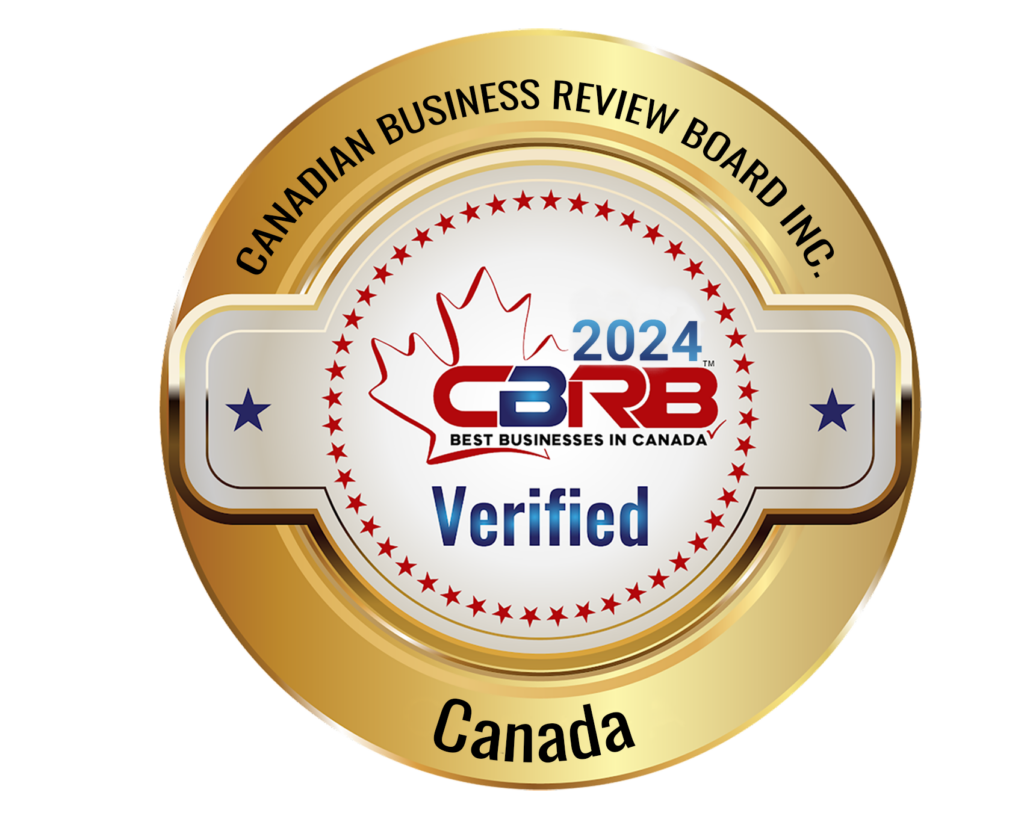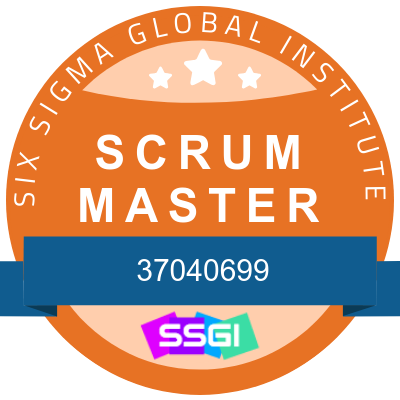Introduction
In recent years, the Canadian healthcare landscape has seen a surge in innovation — from digital health platforms and mental wellness apps to specialized clinics and biotech ventures. Entrepreneurs are increasingly recognizing the potential to create impactful, scalable healthcare solutions. However, launching a healthcare startup in Canada comes with a unique set of challenges. These include navigating complex regulations, securing funding, addressing patient data privacy, and ensuring clinical efficacy — all while trying to move quickly in a competitive market.
This is where Agile business planning becomes a game-changer. Originally developed for software development, Agile strategy in healthcare is now transforming how health startups are planned, launched, and scaled. Its iterative, customer-centric approach enables founders to adapt quickly, validate solutions early, and manage risks more effectively in a dynamic industry.
This blog is your practical guide to using Agile principles in launching a healthcare venture in Canada. Whether you’re a clinic founder, a health tech innovator, or a medical professional ready to bring your vision to life, you’ll learn how to strategically apply Agile to streamline your launch, stay compliant, and meet real-world patient needs.
Why Healthcare Startups in Canada Face Unique Challenges
Building a successful healthcare startup is no small feat — and in Canada, the journey comes with a distinct set of hurdles. Understanding these early on is essential for founders looking to design realistic timelines, budgets, and product roadmaps. Let’s explore the core healthcare startup challenges in the Canadian context:
- Regulatory Requirements
Before launching any health product or service, startups must navigate complex regulatory frameworks. Health Canada oversees product safety, efficacy, and approvals, especially for medical devices, digital health tools, and pharmaceuticals. For service-based startups, ensuring compliance with provincial privacy regulations like Ontario’s Personal Health Information Protection Act (PHIPA) is critical. Mishandling patient data — even unintentionally — can result in serious penalties and loss of public trust.
- High R&D Costs and Long Development Cycles
Unlike tech startups that can move fast and pivot frequently, healthcare innovation often involves time-intensive clinical validation and trials. Whether you’re developing a mental health app, a therapeutic device, or a new clinical workflow, the research and development (R&D) costs can be prohibitive. Additionally, testing new solutions within clinical settings requires access to practitioners, patients, and ethical review boards, slowing down the pace of progress.
- Funding and Reimbursement Complexity
Accessing health startup funding in Canada is another common barrier. While government grants and accelerator programs are available, the funding process is competitive and often slow. Additionally, navigating reimbursement systems — such as the Ontario Health Insurance Plan (OHIP) — adds complexity. Many startups must begin as private-pay models before they can explore public healthcare partnerships or insurance coverage, limiting early scalability.
- Consumer Trust & Market Saturation
In an increasingly crowded market filled with apps, platforms, and private clinics, earning consumer trust is crucial. Patients and providers alike are cautious about adopting new tools without clear evidence or referrals. Differentiating your brand, demonstrating results, and securing early adopters takes focused marketing and patient engagement strategies.
- Workforce Shortage & Team Scaling
Canada is currently facing a healthcare workforce shortage, particularly in nursing, allied health, and behavioral health. For startups, this makes hiring skilled clinical staff — or partnering with them — both competitive and costly. Scaling the team while maintaining quality of care can become a bottleneck if not planned carefully from the outset.
What Is Agile and Why It Works for Health Startups
As healthcare startups strive to innovate within a highly regulated, resource-constrained environment, traditional business planning often falls short. That’s where Agile strategy in healthcare comes in — offering a more flexible, iterative approach that supports learning, adaptation, and speed.
What Is Agile?
Agile is a project management and product development methodology originally designed for software teams. At its core, it emphasizes iterative progress, collaborative problem-solving, early delivery of value, and continuous feedback loops. In the context of healthcare startups, Agile helps founders avoid spending months (or years) building a product or service that may not meet real-world clinical or patient needs.
Instead of launching with a full-scale product, Agile promotes the creation of Minimum Viable Products (MVPs) — basic but functional solutions that can be tested and refined based on user feedback.
Why Agile Works for Healthcare Startups
- Reduces Risk in Complex Environments
Agile lets startups test small components of their product or service before committing to large-scale investments. This is ideal in a field where mistakes are costly and timelines are long. You can validate ideas early, making pivots based on real user behavior — not assumptions.
- Speeds Up Innovation Cycles
Rather than waiting months to complete a clinical tool or patient-facing platform, Agile allows for fast development sprints and frequent iterations. This pace is especially valuable in the Canadian healthcare innovation space, where adapting to patient needs and regulatory changes quickly is key.
- Enhances Cross-Functional Collaboration
Healthcare involves diverse stakeholders — clinicians, developers, patients, administrators. Agile encourages transparency, communication, and regular check-ins (called scrums) to ensure all voices are heard and the product evolves to meet actual clinical demands.
- Improves Responsiveness to Market Feedback
In a market where consumer trust is everything, getting feedback from early adopters can be a game changer. Agile enables startups to incorporate that feedback into each development cycle, delivering customer-centric solutions that are more likely to succeed.
In short, Agile turns uncertainty into opportunity — making it the perfect match for the dynamic, highly regulated world of Canadian healthcare startups.
Steps to Launching a Healthcare Startup Using Agile (Agile Sprint Breakdown)
Agile isn’t just a buzzword — it’s a practical framework that breaks your launch into manageable, actionable stages called sprints. For healthcare entrepreneurs launching a healthcare startup in Canada, here’s how to use Agile methodology to turn your vision into a market-ready solution.
Step 1: Discovery Sprint (1–2 Weeks)
Goal: Define the problem, target user, and value proposition.
In this phase, your Agile team — including clinical advisors, developers, and stakeholders — conducts initial research to understand user pain points and system needs. You’ll also explore the regulatory landscape (Health Canada approvals, privacy policies like PHIPA) to set realistic boundaries for your first product version.
Output: Problem statement, user personas, and regulatory checklist.
Step 2: Planning Sprint (1–2 Weeks)
Goal: Define MVP (Minimum Viable Product) and set sprint goals.
Here, you’ll narrow your scope to the core features that can be developed and tested first. Set SMART goals and success metrics. For example, instead of building a full patient portal, start with a secure appointment booking tool integrated with OHIP billing or PHIPA-compliant messaging.
Output: Product backlog, prioritized task list, risk log.
Step 3: Build & Test Sprints (2–6 Weeks per sprint)
Goal: Develop your MVP in short, focused cycles.
Start coding, designing, or building. After each sprint, review what’s working and what needs revision. Gather real-time feedback from clinical testers, early adopters, or beta patients. Integrate compliance checks early in the build (especially for regulated medical devices or digital health platforms).
Output: Iterative product versions, sprint demos, testing feedback.
🧪 Step 4: User Feedback Sprint
Goal: Pilot your MVP with real users in a clinical or simulated environment.
Collect feedback from healthcare professionals, patients, and regulatory consultants. Identify usability issues, bugs, and compliance gaps. Adjust scope or pivot as needed. This step is essential for agile business planning and for products that will later need formal approval.
Output: Usability data, feedback summary, refined product roadmap.
🚀 Step 5: Launch Sprint
Goal: Prepare for public or soft launch.
Develop your go-to-market plan including pricing, marketing assets, and onboarding workflows. Secure necessary approvals (if required) and ensure your system is scalable and support-ready. If you’re targeting health startup funding in Canada, this is also the stage to present a validated MVP to investors.
Output: Launch checklist, stakeholder briefing, funding presentation materials.
This structured, repeatable approach helps healthcare startups manage risk, build better products, and bring solutions to market faster — without getting lost in months of planning.
Case Study: Using Agile to Launch a New Medical Device in Canada
Let’s explore how Agile methodology can be applied in a real-world scenario — launching a wearable cardiac monitoring device developed by a MedTech startup in Toronto.
The Challenge
The founders, a team of biomedical engineers and cardiologists, wanted to create a non-invasive wearable for early arrhythmia detection in at-risk seniors. But like many in the Canadian healthcare innovation space, they faced challenges such as:
- Strict regulatory requirements under Health Canada’s Medical Devices Regulations
- Privacy compliance with PHIPA
- High R&D costs and limited early-stage capital
- Long feedback loops from clinical validation
- The need for real-time improvements during testing phases
Applying Agile: Sprint-by-Sprint Breakdown
Discovery Sprint
The team worked with cardiologists, caregivers, and patients to understand clinical pain points. They identified that elderly patients were often non-compliant with current Holter monitors due to bulkiness and lack of real-time alerts.
✅ Output: Defined MVP — a lightweight, Bluetooth-enabled patch with app-based notifications.
Planning Sprint
The startup prioritized essential features: heart rate detection, mobile app integration, and encrypted cloud storage. They mapped a risk plan focusing on data privacy and electrical safety.
✅ Output: Compliance roadmap, user story backlog.
Build & Test Sprints
Over 3 sprints (6 weeks), engineers and designers rapidly developed hardware prototypes while simultaneously testing software modules. Usability feedback was collected after each sprint from a pilot group of 10 seniors.
✅ Output: Improved device ergonomics, app UI adjustments, battery life enhancement.
Feedback Sprint
After integrating beta feedback, clinical advisors helped refine the patient onboarding experience. Security experts ran privacy audits to align with PHIPA and Health Canada’s Class II device requirements.
✅ Output: Refined MVP, updated technical file for regulatory submission.
Launch Sprint
With IRB approval and early clinical validation, the startup launched a soft rollout in select cardiac clinics across the GTA. Investor-ready pitch decks and marketing plans were built concurrently to raise seed funding for national scale-up.
✅ Output: 100 beta units deployed, funding secured, Health Canada submission underway.
This Agile approach reduced time-to-market by 40%, enabled faster iteration cycles, and ensured regulatory compliance was embedded from Day 1 — showing why agile strategy in healthcare is a game changer for MedTech innovation in Canada.
Tools and Teams Needed for Agile Healthcare Launches
To successfully launch a healthcare product or service using Agile methodology, startups must be equipped not only with the right mindset but also with the right tools and cross-functional teams.
Assembling the Right Agile Healthcare Team
Agile thrives on collaboration. For healthcare startups—especially those in MedTech, health tech, or clinical services—this means bringing together experts across several domains:
- Product Owner: Typically a founder or lead clinician who represents the end-user’s needs and prioritizes the product backlog.
- Scrum Master or Project Lead: Facilitates Agile processes, removes blockers, and ensures continuous progress through sprints.
- Clinical Experts: Doctors, nurses, therapists, or healthcare specialists who provide real-world insights into clinical workflows and patient needs.
- Regulatory & Compliance Advisor: Navigates licensing, Health Canada regulations, and privacy frameworks like PHIPA or PIPEDA.
- UX/UI Designers: Ensure patient- and clinician-friendly interfaces for digital tools.
- Developers & Engineers: Create the software or physical device; essential for MedTech and health apps.
- Quality Assurance & Risk Managers: Test for safety, quality, and clinical efficacy.
Recommended Agile Tools for Healthcare Startups
Agile relies on quick feedback loops, clear visualization, and real-time collaboration. These tools help startups stay lean and responsive:
- Project Management:
- Jira, Asana, or Trello for sprint planning and backlog tracking
- Documentation & Collaboration:
- Confluence or Notion for SOPs, research, and version control
- Customer & Patient Feedback:
- Typeform, Dovetail, or Google Forms for structured interviews and surveys
- Clinical Compliance:
- Greenlight Guru for MedTech-specific QMS and design controls
- MedStack for privacy-first cloud hosting in compliance with Canadian healthcare standards
- Prototyping & Testing:
- Figma or Sketch for UI mockups
- InVision for interactive wireframes
🔄 Iterative Development with Compliance Built In
Unlike traditional product development, Agile enables compliance and testing to be integrated during the build—not just at the end. This is crucial in launching a healthcare startup in Canada, where regulatory approval can be a bottleneck if addressed too late.
By using Agile sprints that include regulatory checkpoints, your team can evolve the product while staying aligned with Health Canada’s guidelines, making it easier to pivot, refine, and scale.
Building the Agile Launch Roadmap (with Timeline)
Creating a roadmap for launching a healthcare startup in Canada requires careful balance between compliance, speed, and adaptability. Agile offers a structured yet flexible approach that breaks the process into sprints, allowing for fast testing, feedback, and iteration while keeping your long-term goals in focus.
Phases of an Agile Healthcare Launch Roadmap
Let’s outline a high-level, 6-month Agile roadmap for launching a new medical device or digital health platform:
Sprint 0: Discovery & Planning (Weeks 1–3)
- Define MVP (Minimum Viable Product) based on clinical/user needs
- Perform market research and competitor benchmarking
- Establish SMART goals
- Set up tools (Jira, Notion, MedStack, etc.)
- Identify regulatory requirements (e.g., Health Canada licensing, ISO 13485, PHIPA)
✅ Key Outputs: Product backlog, value proposition, user personas, compliance strategy
Sprint 1–2: Prototype & Early Validation (Weeks 4–7)
- Design wireframes or mockups for digital platforms
- Build low-fidelity prototype or basic version of device
- Conduct internal usability testing
- Start gathering feedback from healthcare professionals or pilot users
- Begin applying for funding (e.g., IRAP, SR&ED, or angel investment)
✅ Key Outputs: Functional prototype, stakeholder validation, funding strategy
Sprint 3–4: Compliance & Product Development (Weeks 8–13)
- Develop working product
- Begin regulatory documentation for Health Canada approval
- Conduct early risk assessments and QA testing
- Recruit beta testers (clinicians, end-users)
✅ Key Outputs: Functional MVP, documentation aligned with regulatory pathway
Sprint 5–6: Beta Testing & Iteration (Weeks 14–19)
- Conduct real-world pilot in clinical or private settings
- Analyze feedback and improve UX/UI or device performance
- Address safety, usability, and workflow concerns
- Finalize pricing strategy and marketing materials
✅ Key Outputs: Refined MVP, clinician testimonials, go-to-market plan
Sprint 7–8: Go-to-Market & Launch (Weeks 20–24)
- Execute marketing campaign (email, LinkedIn, healthcare forums)
- Finalize Health Canada documentation and submit for approval
- Launch website with booking/ordering functions
- Host webinars or demos for providers and buyers
✅ Key Outputs: Product in market, sales materials, regulatory submission
Agile Flexibility Matters
Using Agile allows teams to pivot quickly when feedback reveals a gap or opportunity—crucial in the fast-evolving Canadian health tech sector. By integrating sprint reviews, retrospectives, and standups, you create a learning system that improves over time.
Real-World Agile Tools and Techniques for Health Startup Teams
Implementing Agile effectively requires the right set of tools tailored to the fast-paced, highly regulated environment of healthcare innovation. Fortunately, modern Agile tools for healthcare startups are built to support compliance, transparency, and continuous improvement.
Project & Sprint Planning Tools
Platforms like JIRA, Trello, and Kanban boards help health startup teams organize workflows, visualize progress, and break large projects into smaller, manageable tasks. Tools like Miro or Lucidchart allow collaborative sprint mapping and brainstorming in real time.
Customer Journey Mapping & User Stories
User stories are essential in project planning for Canadian startups — especially in health tech. Mapping out a patient’s or provider’s journey through your app, service, or device helps teams prioritize features that offer the highest value.
Agile Routines that Keep Teams Aligned
Daily stand-ups, weekly sprint reviews, and retrospectives foster constant feedback and alignment. These brief, structured meetings ensure the team is addressing blockers and adapting as new information arises.
Compliance-Focused Development Tools
For startups handling patient data, using HIPAA/PHIPA-compliant platforms (e.g., MedStack, AWS HealthLake, or Microsoft Cloud for Healthcare) ensures privacy and regulatory requirements are met while maintaining Agile flexibility.
With the right tools and rituals, even small health tech teams can operate with the efficiency and responsiveness of much larger organizations.
SEO Keywords used: agile tools for healthcare startups, health startup management tools, project planning for Canadian startups
How Dana PharMed Supports Agile Business Planning in Healthcare
At Dana PharMed, we specialize in helping Canadian healthcare startups turn ideas into impactful, scalable businesses — using agile healthcare business consulting methods that reduce risk and accelerate go-to-market timelines.
Our process begins with a discovery sprint, where we identify your value proposition, target users, and regulatory pathway. From there, we work alongside your team in iterative planning sessions to co-create everything from business plans and pitch decks to licensing applications and market entry strategies.
We support a wide range of health innovators:
- Private clinics & diagnostic labs
- Medical device & digital health app developers
- Natural wellness & lifestyle product companies
With deep experience in business planning for healthcare in Ontario and across Canada, we understand how to navigate federal and provincial healthcare systems, secure funding, and comply with complex regulations like PHIPA and Health Canada approvals.
Whether you’re launching a new medtech innovation or growing an established clinic, Dana PharMed provides a custom agile roadmap built for healthcare success.
Conclusion & Key Takeaways
In the dynamic world of healthcare startups, using Agile business planning provides a flexible, adaptive approach that’s crucial for navigating challenges such as regulation, funding, and product development. By embracing an iterative process, health innovators can rapidly respond to market demands, ensure compliance, and reduce the time to market, all while staying customer-focused.
Key takeaways for Canadian healthcare entrepreneurs looking to launch or scale their startups:
- Agile Methodology allows flexibility to adapt quickly to the evolving healthcare landscape, optimizing your business strategy.
- Utilize Agile tools such as JIRA, Trello, and Kanban boards to streamline team communication, manage project workflows, and ensure compliance with privacy regulations like PHIPA.
- Work with consultants like Dana PharMed who bring agile strategy expertise to support your market entry, pitch development, and funding applications, ensuring your startup thrives in a competitive healthcare environment.
At Dana PharMed, we’re committed to guiding healthcare entrepreneurs through the agile process, helping them build sustainable, successful businesses. Whether you’re in the medtech, digital health, or wellness sector, our team can help turn your vision into reality.









